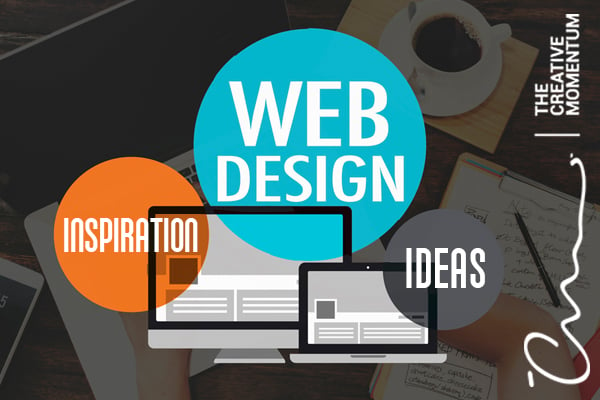Top Trends Shaping the Future of Innovative Web Design
Top Trends Shaping the Future of Innovative Web Design
Blog Article
The Comprehensive Overview to Crafting Aesthetically Appealing and Practical Website Design That Fulfills Customer Demands
In today's electronic landscape, the value of crafting web styles that are both functional and visually enticing can not be overstated. By prioritizing user-centered layout concepts, designers can develop experiences that not just attract yet additionally keep user passion. Secret visual components such as positioning, contrast, and equilibrium play a vital function in this process, while the necessity of receptive style makes certain availability across numerous devices. The trip does not finish with first style; recurring testing and version are essential for improvement. What strategies can one employ to properly balance these elements?
Comprehending User-Centered Layout
At the heart of reliable web design lies the concept of user-centered layout, a philosophy that prioritizes the requirements, choices, and actions of customers throughout the development process. This method includes thorough study to understand the target audience, making sure that the end product reverberates with its intended users. By incorporating user comments at every stage, developers can develop user interfaces that are not just aesthetically appealing but also practical and user-friendly.
User-centered layout stresses compassion, calling for developers to enter the individuals' footwear and consider their point of views. Methods such as customer identities, trip mapping, and use testing are employed to identify pain points and opportunities for enhancement. This repetitive procedure permits continuous improvement, as designers adapt to progressing individual needs and technical improvements.
Including user-centered layout causes raised user complete satisfaction and engagement, eventually resulting in higher conversion rates and brand name commitment. It promotes a collaborative setting where stakeholders, consisting of designers, customers, and designers, function together to attain a shared vision. By positioning individuals at the center of the style process, organizations can develop web sites that not only satisfy business purposes but also provide purposeful and gratifying experiences for customers.
Key Concepts of Visual Design
Efficient aesthetic design works as the structure for creating appealing and straightforward websites. It includes numerous key principles that assist developers in crafting aesthetically pleasing and practical user interfaces.
First, equilibrium plays a critical role in accomplishing aesthetic consistency. Designers ought to distribute aspects equally throughout the layout to prevent overwhelming customers. This can be attained through symmetrical or asymmetrical layout strategies.

Additionally, placement is important for arranging information. Regular alignment of text and photos promotes a tidy layout, enhancing total navigation and customer experience.
 Closeness also adds to aesthetic quality. Grouping associated products together aids individuals in recognizing the relationship between different components, making the interface a lot more user-friendly.
Closeness also adds to aesthetic quality. Grouping associated products together aids individuals in recognizing the relationship between different components, making the interface a lot more user-friendly.Last but not least, consistency in design aspects, such as styles, fonts, and colors, strengthens brand name identification and aids customers browse the website extra easily. By incorporating these key principles of visual design, web designers can create interfaces that are not only visually appealing yet user-centered and also useful.

Value of Responsive Design
Receptive layout is a vital aspect of contemporary internet development, making sure that internet sites operate perfectly throughout a selection of devices and display dimensions. As the internet landscape develops, the variety of devicesâEUR" varying from smartphones to tablets and desktop computer computersâEUR" demands a design technique that suits all users.
Executing receptive style enables a flexible layout that immediately adjusts based upon the customer's display dimensions. This adaptability not only improves access yet also improves functionality, as individuals can browse and engage with the site effortlessly, regardless of their device.
Furthermore, online search engine like Google focus on mobile-friendly web sites in their ranking formulas. A browse around this site receptive style can dramatically boost a website's search engine optimization efficiency, inevitably driving even more web traffic and boosting presence.
In addition, receptive style minimizes the requirement for preserving several versions of a site, improving updates and content administration. This effectiveness equates into cost savings and a more natural brand experience across platforms.
Enhancing User Experience
Customer experience (UX) is a crucial part of internet style, influencing how visitors connect with an internet site and regard its worth. A well-crafted UX makes sure that individuals can navigate intuitively, locate info quickly, and achieve their goals successfully. The style should take into consideration the individual's journey, from the minute they arrive on the site to the completion of their wanted action, whether that be buying, registering for an e-newsletter, or accessing info.
Key elements that boost UX consist of clear navigation, receptive designs, and engaging visual content. Uniformity in design elements such as font styles, switches, and shades cultivates knowledge, making the internet site really feel cohesive. In addition, maximizing load times is critical; individuals are less likely to remain on a site that is sluggish to react.
Incorporating access features makes sure that all users, including those with handicaps, can interact with the site flawlessly. Furthermore, user-centric style concepts need to direct material company, giving relevant info in a rational framework. By focusing on customer demands and choices, web designers can create experiences that are not only visually attractive however likewise useful, inevitably cultivating customer complete satisfaction and loyalty
Evaluating and Iterating Styles
Checking and iterating designs are essential procedures that comply with the preliminary development of a web site, making certain that the customer experience stays at the forefront of any adjustments. These stages include gathering user feedback, evaluating design efficiency, and making educated alterations to improve functionality and interaction.
Usability screening allows developers to observe real customers as they engage with the website, recognizing pain factors and areas for renovation (web design). User studies can provide qualitative understandings, capturing customer beliefs and preferences.
Constant model cultivates an adaptive layout method, where the web site advances in reaction to customer behavior and feedback. By committing to strenuous testing and model, developers can produce a web site that not go now just fulfills visual standards but also supplies a enjoyable and seamless user experience.
Conclusion
To conclude, reliable internet style requires the combination of user-centered principles, key aesthetic style aspects, and responsive structures to develop appealing interfaces. By prioritizing customer requirements and executing continuous screening and version, designers can refine their productions to improve overall satisfaction. The dedication to these methods not only cultivates a visually appealing visual however additionally makes sure performance throughout varied devices, inevitably contributing to a positive user experience and raised interaction.
By prioritizing user-centered style principles, developers can create experiences that not just attract however also maintain user passion.At the heart of efficient internet design exists the principle of user-centered style, website here a philosophy that focuses on the needs, preferences, and actions of individuals throughout the growth process. By putting users at the forefront of the style procedure, organizations can develop websites that not only fulfill company goals yet likewise give rewarding and significant experiences for customers.
By focusing on user requirements and choices, internet designers can produce experiences that are not just aesthetically appealing however additionally useful, ultimately promoting individual contentment and loyalty.
User surveys can use qualitative understandings, capturing user beliefs and preferences. (web design)
Report this page